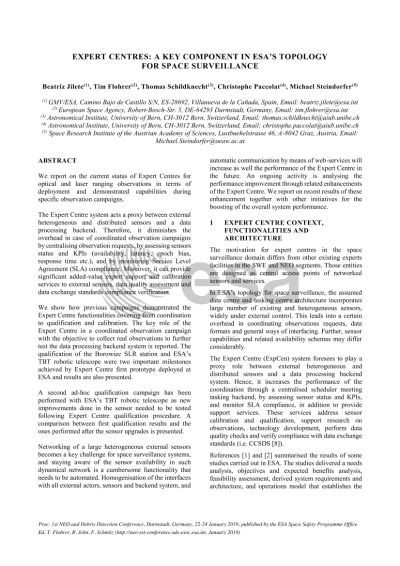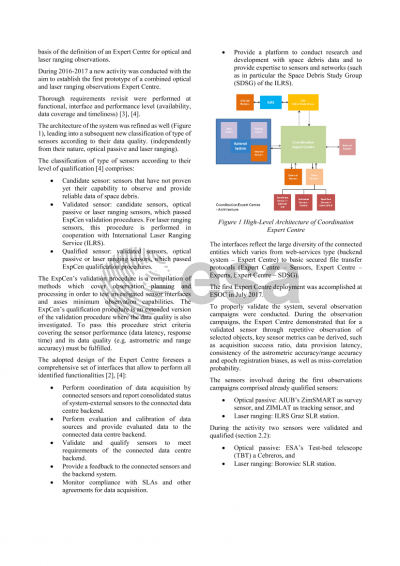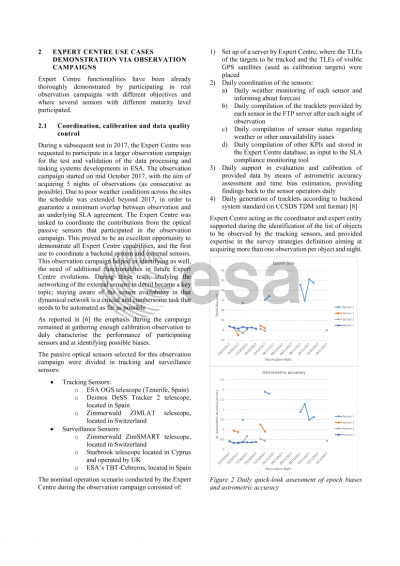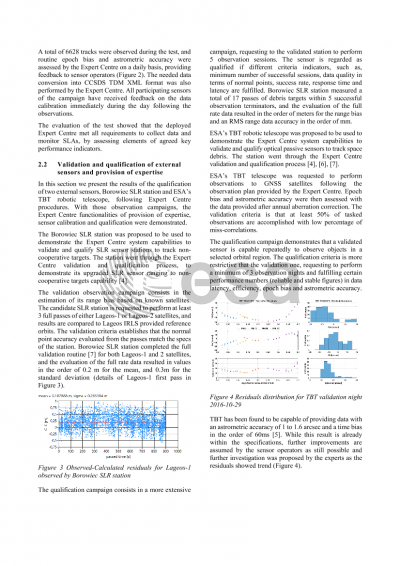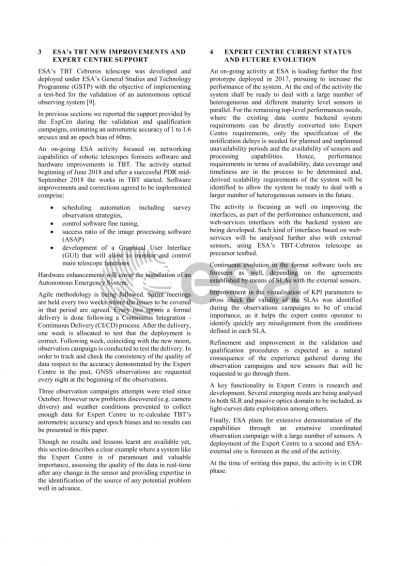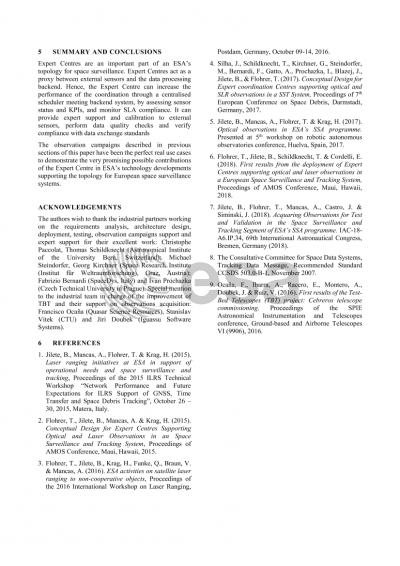Document details

Abstract
We report on the current status of Expert Centres for optical and laser ranging observations in terms of deployment and demonstrated capabilities during specific observation campaigns.
The Expert Centre system acts a proxy between external heterogeneous and distributed sensors and a data processing backend. Therefore, it diminishes the overhead in case of coordinated observation campaigns by centralising observation requests, by assessing sensors status and KPIs (availability, latency, epoch bias, response time etc.), and by monitoring Service Level Agreement (SLA) compliance. Moreover, it can provide significant added-value expert support and calibration services to external sensors, data quality assessment and data exchange standards compliance verification.
We show how previous campaigns demonstrated the Expert Centre functionalities covering from coordination to qualification and calibration. The key role of the Expert Centre in a coordinated observation campaign with the objective to collect real observations to further test the data processing backend system is reported. The qualification of the Borowiec SLR station and ESA’s TBT robotic telescope were two important milestones achieved by Expert Centre first prototype deployed at ESA and results are also presented.
A second ad-hoc qualification campaign has been performed with ESA’s TBT robotic telescope as new improvements done in the sensor needed to be tested following Expert Centre qualification procedure. A comparison between first qualification results and the ones performed after the sensor upgrades is presented.
Networking of a large heterogeneous external sensors becomes a key challenge for space surveillance systems, and staying aware of the sensor availability in such dynamical network is a cumbersome functionality that needs to be automated. Homogenisation of the interfaces with all external actors, sensors and backend system, and automatic communication by means of webservices will increase as well the performance of the Expert Centre in the future. An ongoing activity is analysing the performance improvement through related enhancements of the Expert Centre. We report on recent results of these enhancement together with other initiatives for the boosting of the overall system performance.
Preview
